Be aware › Coyotes
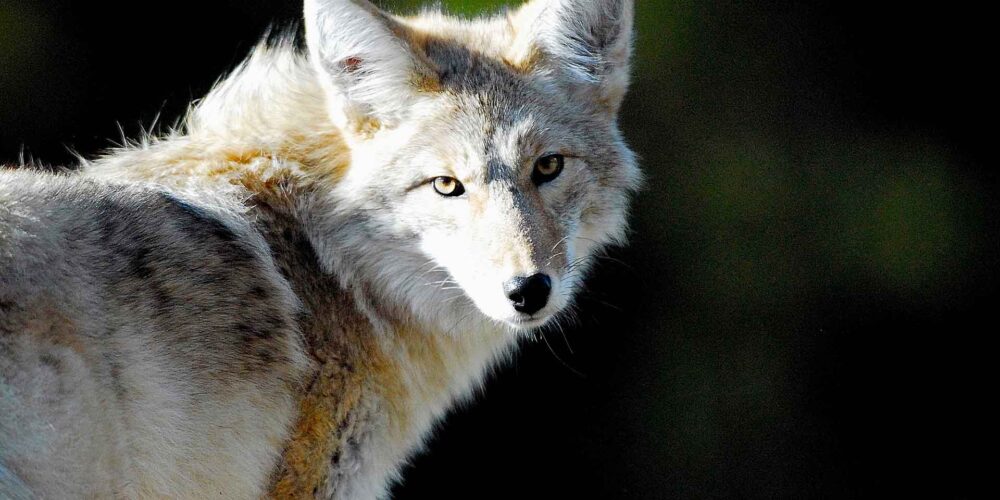
Welcome to Coyote Country
Coyotes are members of the dog family Canidae. They can be found throughout the United States and are quite common in Utah. They are adapted to a wide range of habitats, including urban areas such as inner cities and suburban neighborhoods.
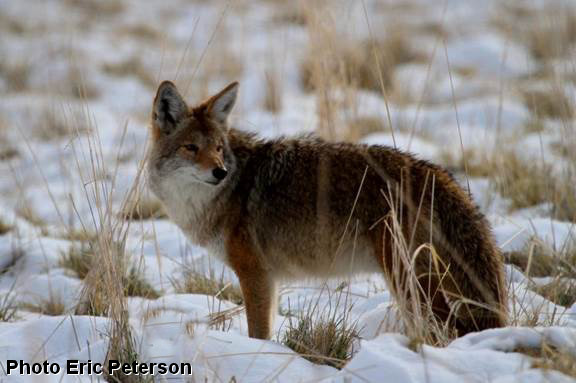
Adult coyotes typically weigh 25–45 pounds. Coyotes are brownish-gray or light gray to reddish in color with a cream-colored belly. They have a long, slender muzzle, bushy tail and triangular ears. Their main vocalizations are loud yipping or short bark howls.
Adult coyote tracks are typically 2½–3 inches long. Note the claws present in the track. Coyotes are mainly active at night, but will hunt during the day. They become more active, vocal and territorial during mating (Dec.–Feb.) and breeding pup season (Apr.–July).
Coyotes are opportunistic predators. They eat small mammals, insects, reptiles, birds, carrion, grasses and fruit. Near human habitation, coyotes may seek trash and pet chow as food.
Coyotes are not usually dangerous to people. A potential exception is if they become habituated to people and lose their natural fear.
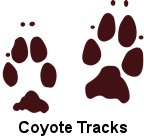

Coyote Call Sound
Preventing Encounters with Coyotes on Your Property
- Do not feed coyotes.
- Remove attractants from your property, including pet food, water sources, bird feeders and fallen fruit.
- Secure trash in a locked receptacle. Keep it inside or put it out only on the morning of pick up.
- Trim vegetation around your yard to reduce hiding places.
- Do not leave small children outside unattended.
- As a deterrent, install outdoor and motion sensitive lighting around your property. Lights also make approaching coyotes visible.
- If a coyote is on your property make it feel unwelcome: yell, throw rocks, bang pots and pans, spray it with a hose or turn on sprinklers.
Ask your neighbors to follow these tips too!
Preventing Conflicts Between Your Pets and Coyotes
Pets may be perceived as food for coyotes and large dogs may be seen as a threat or competition. Coyotes have taken pets in backyards, open areas and right off a leash.
Protect your pets and keep them current on vaccinations. Here are some tips to help reduce the risks to your pets:
- Supervise pets when they are outside, especially at dawn and dusk.
- Never leave pets outside after dark.
- Keep dogs leashed, especially when on trails and in open areas.
- Never let your dog chase or “play” with coyotes.
- Cats should be kept indoors.
- To deter coyotes, fence your yard with a six-foot high fence. Use electric fencing to help keep coyotes away from pets and livestock.
- Provide secure shelter for hobby farm pets such as poultry, rabbits and goats.
- Secure outdoor pets in a kennel, barn or shed at night. If that is impossible, a small, well-lit pen close to a structure is the next best option.
- Actively discourage coyotes from your property. Install strobe lights and sirens to scare away coyotes. Use guard animals such as dogs, donkeys or llamas to protect hobby farm pets and livestock.
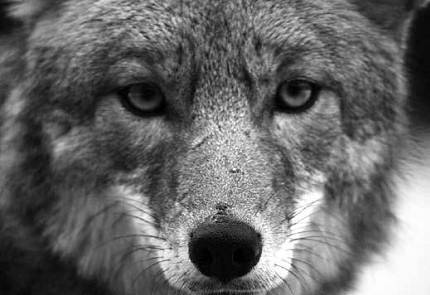
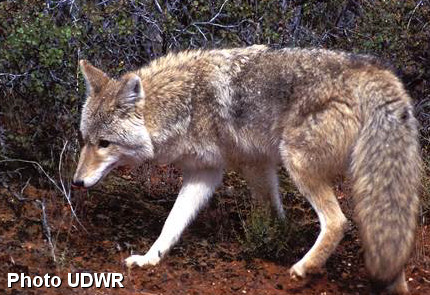
If You Encounter a Coyote
- Make noise while hiking to alert wildlife of your presence.
- Do not approach a coyote.
- Pick up small pets, make loud noises, stomp your feet, or throw rocks or sticks if necessary to frighten the coyote away.
- Do not run or turn your back on a coyote that has approached you. Face the coyote, shout at it, be as big and loud as possible, wave your arms and back away slowly.
If you have an encounter with an aggressive coyote, please call animal control, your local police department or your county sheriff’s office to handle the situation.
Downloads
- Coyote Biology & Ecology (PDF)
- “Did I see a wolf or a coyote?” Learn the differences between the wild and domestic canids (PDF)
- Welcome to Coyote Country Brochure (PDF)
- Country Safety flyer (PDF)

